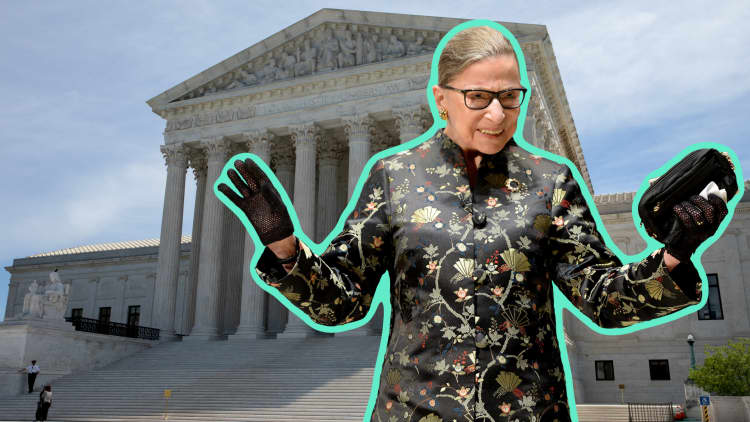On August 10, 1993, Ruth Bader Ginsburg was sworn in as America's 107th Supreme Court justice.
But before she became a member of the highest court in the land, she was a successful woman struggling to make it in a male-dominated occupation. Ginsburg was born to a family of immigrants in Brooklyn, New York in 1933. Her mother, Celia, was a strong believer in education and encouraged Ginsburg to be independent and studious.
That paid off. She graduated at the top of her class from Cornell University in 1954, the same year she married her husband Marty. The two would remain married until his death in 2010.
Ginsburg transferred from Harvard Law School to Columbia after her husband secured a job with a law firm in New York City. The change in schools did nothing to slow Ginsburg down, and she again graduated top of her class in 1959.
But her academic success did not guarantee success in her professional career, where she still struggled to find a job because of her gender. "For women of my generation, the challenge was to get the first job," Ginsburg said at an event at Columbia Law School in 2018. "There were not the tools to challenge discrimination. We mostly accepted it as an obstacle we had to overcome."
Passed over for multiple clerk positions, it was not until her mentor, Columbia professor Gerald Gunther pressured Judge Edmund Palmieri to take a risk on Ginsburg that she found a job. Gunther told Palmieri to replace her with a man if she did not perform well, but was adamant Ginsburg be given a fair shot first.
"If you don't give her a chance, I will never recommend another Columbia student to you," Ginsburg says Gunther told Palmieri in 1960.
The experience shaped Ginsburg's interests as a lawyer, and her legal crusade against gender discrimination led her to co-found the Women's Rights Project at the American Civil Liberties Union and earned her an appointment to the U.S. Court of Appeals for the District of Columbia during the Carter administration.
President Bill Clinton nominated her to the Supreme Court in 1993, and Ginsburg became only the second female justice on the court (the first was Sandra Day O'Connor.) Since then, she's been joined by Justices Elena Kagan and Sonia Sotomayor.
As a member of the court's liberal wing, she's become known for her fiery dissents and calculated analyses of cases involving gender discrimination. She's authored major decisions on discrimination in college admissions and equal pay for men and women.
Today, "RBG" is celebrated as a feminist icon and is the subject of movies, memorabilia and memes.
"When I'm sometimes asked when will there be enough [women on the Supreme Court], and I say, 'When there are nine,' people are shocked," Ginsburg said at the 10th Circuit Bench & Bar Conference in Boulder, Colorado, in 2012. "But there'd been nine men, and nobody's ever raised a question about that."





